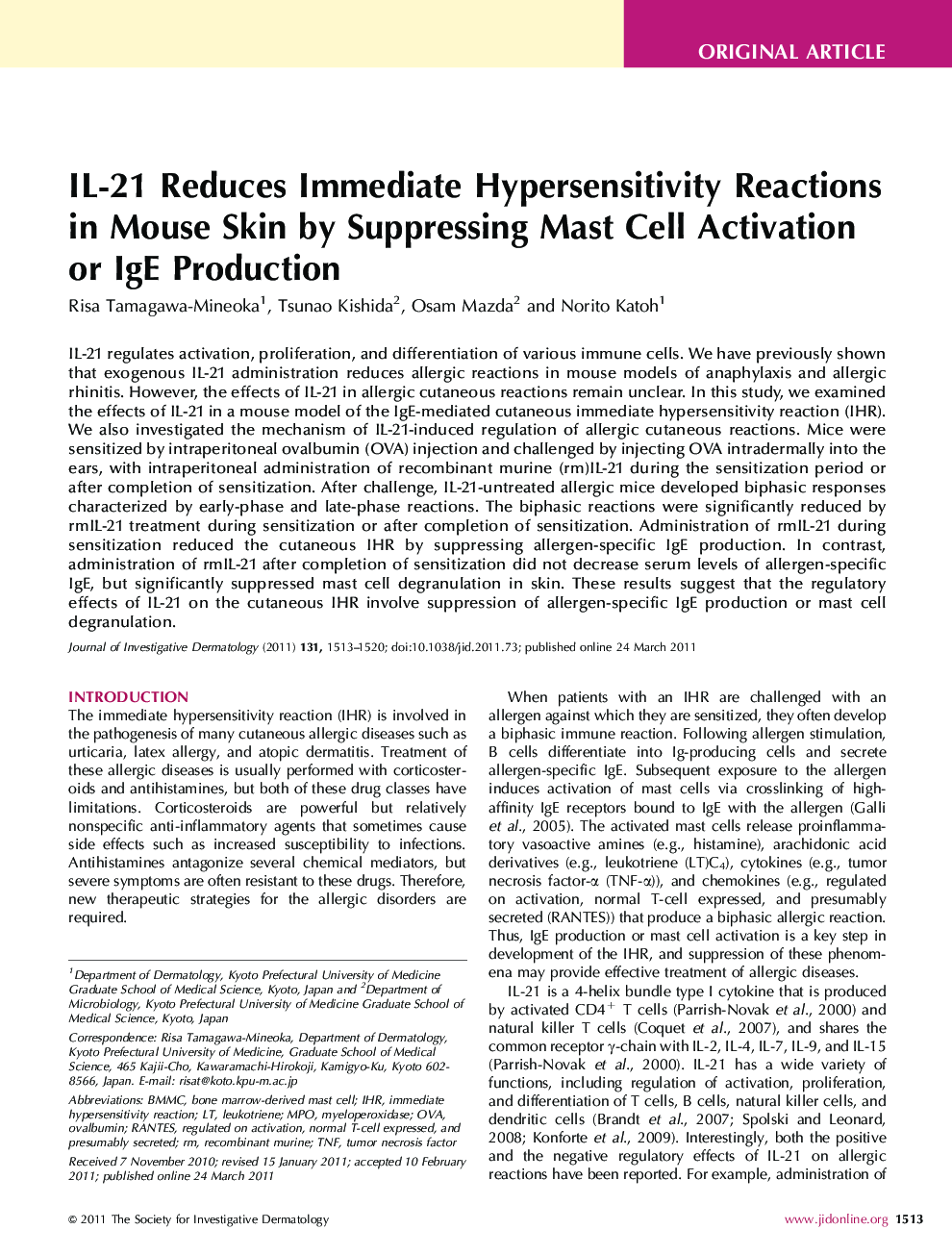| Article ID | Journal | Published Year | Pages | File Type |
|---|---|---|---|---|
| 3215604 | Journal of Investigative Dermatology | 2011 | 8 Pages |
IL-21 regulates activation, proliferation, and differentiation of various immune cells. We have previously shown that exogenous IL-21 administration reduces allergic reactions in mouse models of anaphylaxis and allergic rhinitis. However, the effects of IL-21 in allergic cutaneous reactions remain unclear. In this study, we examined the effects of IL-21 in a mouse model of the IgE-mediated cutaneous immediate hypersensitivity reaction (IHR). We also investigated the mechanism of IL-21-induced regulation of allergic cutaneous reactions. Mice were sensitized by intraperitoneal ovalbumin (OVA) injection and challenged by injecting OVA intradermally into the ears, with intraperitoneal administration of recombinant murine (rm)IL-21 during the sensitization period or after completion of sensitization. After challenge, IL-21-untreated allergic mice developed biphasic responses characterized by early-phase and late-phase reactions. The biphasic reactions were significantly reduced by rmIL-21 treatment during sensitization or after completion of sensitization. Administration of rmIL-21 during sensitization reduced the cutaneous IHR by suppressing allergen-specific IgE production. In contrast, administration of rmIL-21 after completion of sensitization did not decrease serum levels of allergen-specific IgE, but significantly suppressed mast cell degranulation in skin. These results suggest that the regulatory effects of IL-21 on the cutaneous IHR involve suppression of allergen-specific IgE production or mast cell degranulation.
